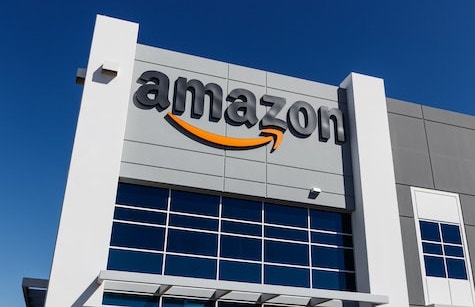Understanding the “New Normal” to Anticipate the “Next Normal:” An Update on Real Estate Sectors During COVID-19

We hear the term “new normal” everywhere these days. And with good reason. But how will this new normal filter across the real estate market moving forward? What is the “next normal?” At this point, it is a question with challenging answers because so many important variables remain uncertain.
Is COVID-19 waning, or are we still in round one of this fight? Will there be a round two? If so, how bad could it be? If the virus continues its assault, what kind of long-term psychological impact will it have on consumers, businesses, and the managers/executives who make the decisions? If the Atlanta Federal Reserve’s generally accurate GDPNow Forecast comes in close to the current expectation of -48.5% economic growth, the second quarter will be a disaster and the worst on record (Source: Atlanta Fed GDPNow Estimate for 2020: Q2). Is that a one-off anomaly, and we get a V-shaped recovery? Does it portend something more ominous, and we get an extended U-shaped recovery or, worse, an L-shaped recovery?
How will this work-from-home trend really play out? Numerous companies, particularly in the tech space, have already announced plans to allow employees to work from home permanently. Is this a sign of a larger trend on the march? Or is it just a reactionary move in a highly emotional period? These questions could be answered in many ways, and in some cases the answers are unknown, but certain trends provide some insight into what the “new normal” could mean for the real estate market as we look ahead.
The Big Question
This brings me to the big question that many real estate investors, including myself, are grappling with: How will the “next normal” impact real estate? As mentioned before in previous posts, paying attention to experts in the field, namely Ray Dalio and Mohamed El-Erian, they are both indicating the same thing when it comes to big, macro matters on investing. Be it stocks or bonds, a shift is underway into high-quality companies with strong balance sheets and an inelastic demand for the products and services they sell. These are companies we might call “storeholds of value.”
In the “next normal,” certain assets and industries will be beneficiaries in the post-COVID-19 world. That is likely a fairly limited universe generally constrained to healthcare, pharmaceuticals, consumer staples, some parts of real estate, and a few others. Some industries will fare much worse. For instance, commercial airlines and industries that rely on crowds (sports arenas, amusement parks, concert venues, cruises, casinos, restaurants, cinemas, and conference tourism) could likely face a very challenging future.
The government enacted quarantines and shutdowns will not last forever. As restrictions are lifted, their impact on real estate will eventually diminish. Many experts are hopeful a vaccine for COVID-19 will be found but others are not so optimistic. However, certain trends resulting from the pandemic will continue to fundamentally change the real estate sector. As they will determine how certain assets perform, long-term changes will need to be considered by investors.
Additionally, think about sovereign debt like U.S. Treasuries. It is certainly safe, but what is a sovereign bond? It is simply a government promise to repay you some level of interest in that country’s currency. But if the bond has minimal, zero, or even negative interest rates, and the currency is going down, then what is the advantage of holding that piece of paper? Our dollar has already begun to weaken, and Goldman Sachs, among others, are projecting a much steeper fall.
Expert Opinion & Pertinent Insight
We are in a moment when we have to look ahead and connect some dots to distinguish opportunities from traps. Currently, the Nasdaq has been moving along either side of 10,000 for the first time ever. The S&P 500, after sinking sharply in March, also flirts again with its own record high. Yet, you have to ask, “what is driving such a disconnect?” While consumers have been crushed, joblessness is epic, and the economy faces its worst period in history, stocks are hitting new highs. Something does not add up.
In attempting to answer these questions, and sourcing the experts for their perceptions, the following thoughts on various real estate sectors were inspired when reading information from Gary Shilling, who does a great job balancing sound rationale with pertinent insight:
- Deglobalization. We are moving away from a “flat world” in which countries once called upon each other to create a safer, more economically intertwined world, and we are heading into a world in which countries favor autonomy. This often produces unknown consequences for trade, economies, social stability, and the like.
- Infrastructure Spending. The U.S. certainly needs it, and it would create millions of jobs. But at what cost? The federal debt is already excessively large and growing by unprecedented leaps.
- Cautious Consumers. This is what I hinted at above – the psychology of the consumer. If a resurgent virus keeps consumers cautious, or if it causes the economy to shut down again, then what?
- Low Inflation/Deflation Expectations. The virus has crippled demand across a broad swath of categories. That is deflationary and could lead to even lower consumer spending, which slows the country even more and activates even more Fed dollars. At some point, this could turn inflationary or even hyperinflationary.
- Low/Negative Interest Rates. This is abnormal and warps the markets. It robs savers and pensioners of much-needed income and, thus, is deflationary in its own right because it shrinks spendable income. Treasury bonds might be safe havens, but if your safe investment is losing money because you hold onto it, what is the point of holding?
- Stock Market Uncertainty. The March collapse supports the realization that the virus was not a fallacy. The likely second collapse will be the realization that the recession, maybe even depression, is real as well.
Based on our collection of data, trends, and industry expert information, here is how various real estate sectors may perform in the post COVID-19 “next normal:”
- Office: On one hand, companies will need more space to socially distance. On the other, companies will need less office space as they move to a work-from-home model, assuming it becomes a driving trend. As such, office real estate is likely to experience a decrease in demand long-term. How much of a decrease remains uncertain until we begin to see more meaningful signs once a vaccine is in place or once the virus subsides. Recent employer surveys show employees overwhelmingly prefer to work from home. By all indications, worker productivity has remained steady or even increased.
- Industrial: Could be a big winner, particularly properties tied to logistics and warehousing needs. People staying at home are ordering more goods online as they prefer less social contact outside their immediate circle of friends and family at this time. This trend, which started well before the pandemic, will likely continue as more people become accustomed to online purchasing, which benefits warehousing operations. Also, manufacturing properties will likely benefit from deglobalization since goods, currently produced overseas, will to some extent be produced locally.
- Retail: Large retail establishments, like malls, were struggling before COVID-19. The virus only helped to speed up the decay, and now many are essentially dead. Some retail tenants went unaffected, particularly those that provide consumer-staple demands. Grocery stores, fast food, and medical necessity retailers have actually done quite well during the pandemic and will likely continue to perform post-COVID. However, the ever-expanding growth of online retailers remains a concern. With several exceptions, retail for the most part looks to be a downward trending asset for the foreseeable future.
- Multifamily: Without a doubt, “home” has become more important than ever, given the shelter-in-place and work-from-home necessity. More than any time in history, our homes have become our shelter, restaurant, entertainment, and office. Workers who are suddenly able to work from anywhere will likely choose to work from cities that are less costly or that offer other appealing factors. The multifamily sector performed better than many experts predicted even given the rapid increase in unemployment and government-imposed eviction moratoriums. The vast majority of tenants continue to pay their rent even in markets hit hardest by the shutdowns like Las Vegas and Orlando, which are heavily dependent on tourism. Some properties have experienced a drop in income, especially Class C properties that tend to rent to hospitality and retail employees. Some Class A properties have performed better as tenants are in higher-paid professions, which are able to work remotely. While we have not seen a sharp increase in evictions, many displaced workers are surviving on government checks, which end in July. Moreover, an extended period of elevated joblessness could have a significant impact on the rental market. Multifamily assets located in markets with a diverse economy and high growth will perform the best.
- Self-Storage: So far, COVID-19 seems to have had very little impact on self-storage properties. Tenants continue to pay their rent and occupancy remains steady. We may see some decline in occupancy if we experience a protracted recession, but for the most part, self-storage is performing well. Even during this time, people are unlikely to transfer their storage items back to their homes.
- Hospitality: The majority of hotels were completely shut down during the quarantine. While income stopped, expenses continued to pile up. Foreclosure moratoriums offered hotel owners a temporary reprieve. However, mortgage payments and expenses will eventually need to be paid. Many hotel owners may not have the necessary reserves to get caught up, which may result in hotel foreclosures. Whether lenders are able, or even willing, to negotiate some form of work out with borrowers remains to be seen. The lifting of travel restrictions will alleviate some hotel expenses, but the recovery will be uneven. Hotels that cater to vacation travelers should see a stronger recovery than those that cater to business travelers, which have had to adapt to new working policies, reduce costs, and shift to the growing preference of virtual meetings. Tracking occupancy rates, we have already seen a rapid increase in reservations and occupancy for vacation destination hotels. People are eager to travel especially to leisure destinations like Disneyworld or Las Vegas, after being cooped up in their homes for so long.
- Student Housing: The shutdown forced most schools to close their campuses and offer remote, online classes instead, which meant that many students moved out of dorms or student apartments and back in with family. In some cases, they also stopped paying rent, and in other cases, these establishments worked with the school for reduced payments. While the majority of colleges plan to reopen in the fall, some will not allow dorms to reopen at full capacity to ensure the health and well-being of the students. This could impact enrollment numbers, especially with international or out of state students who generally need campus housing. As such, the outlook remains mixed. If online courses become more common, student housing will decline. If colleges return to regular instruction, as most are anxious to do, student housing could rebound in the long run.
- Medical Office: The performance of medical office properties has been mixed during the shutdown. Facilities that offered essential procedures and services were allowed to remain open. However, those that offered elective procedures were required to close. As these properties are allowed to reopen, and more significantly in the long-term, medical offices will likely rebound and perform well.
Income Property Advisors will continue to closely monitor the impact COVID-19 will have on these various real estate sectors. Although some variables remain uncertain, as things often change daily, we will continue to reconcile these difficult questions and compile data that provides some answers. Although permanent changes have occurred for some, others will benefit from long-term changes brought about by the pandemic.
As we move into the “next normal,” we are committed to providing the most up to date information regarding your investments, now and in the future.










